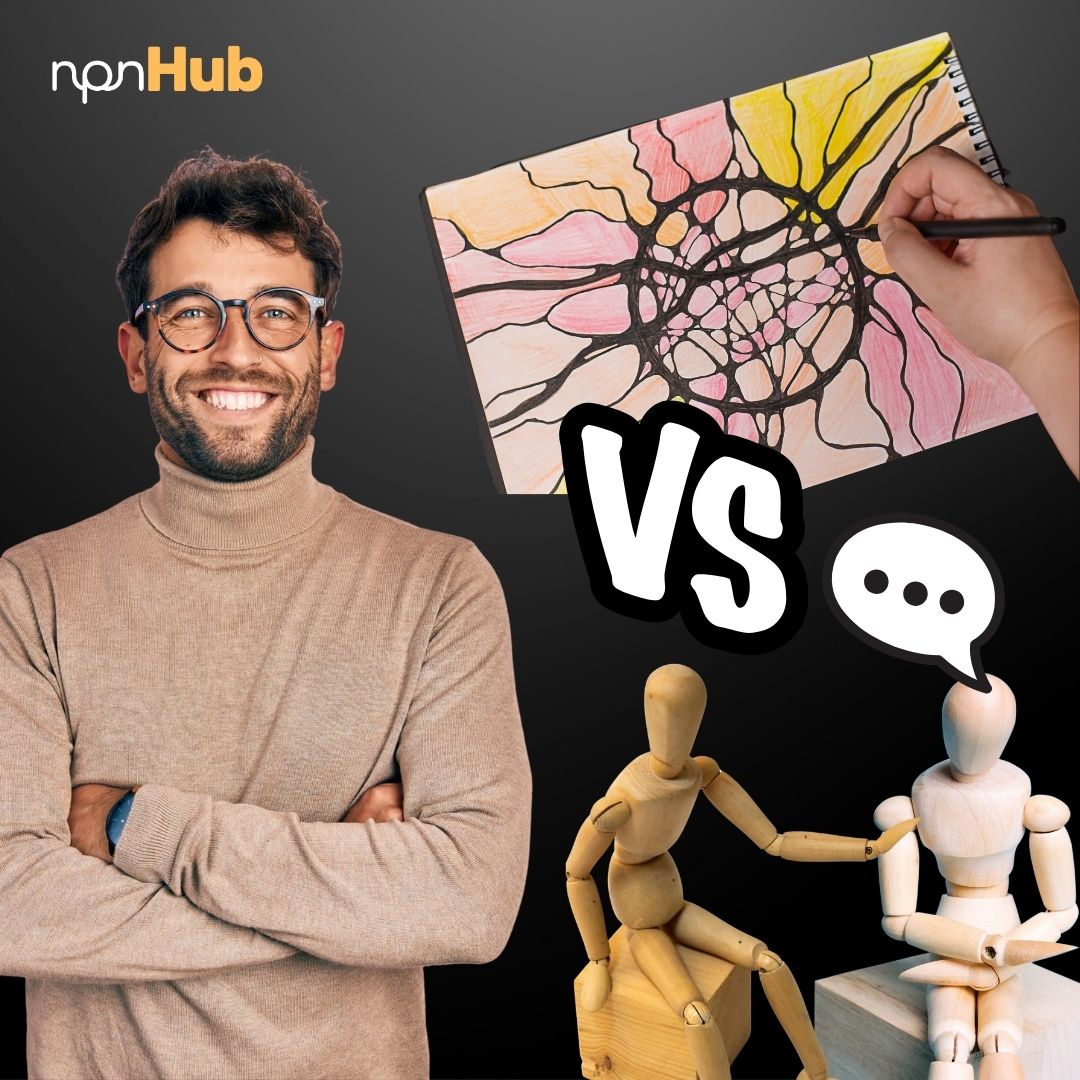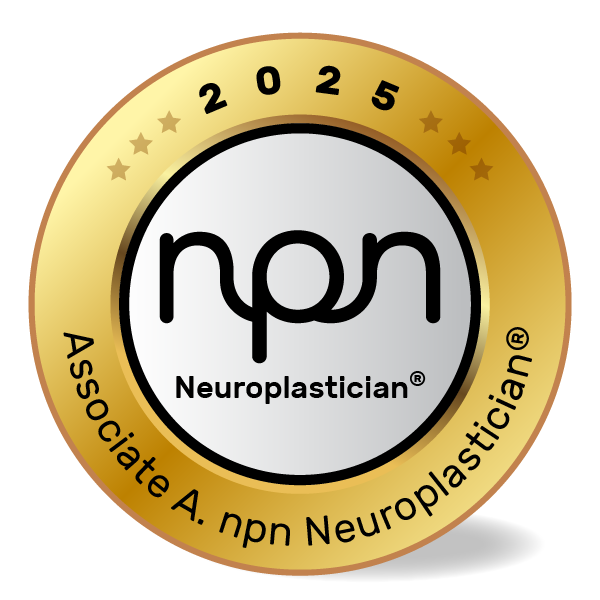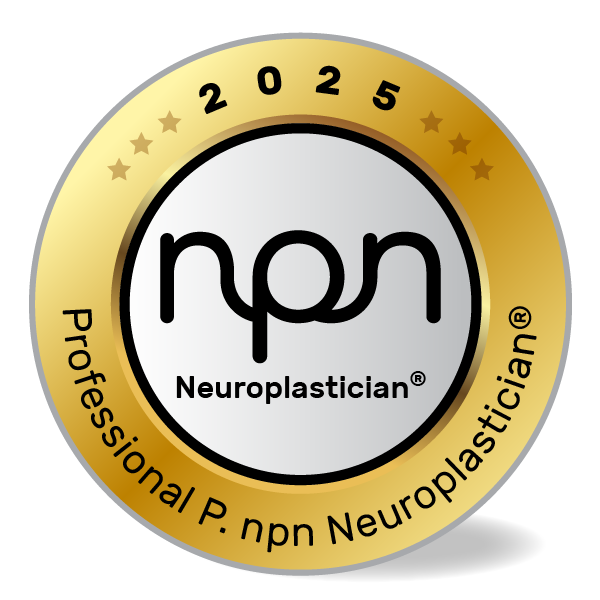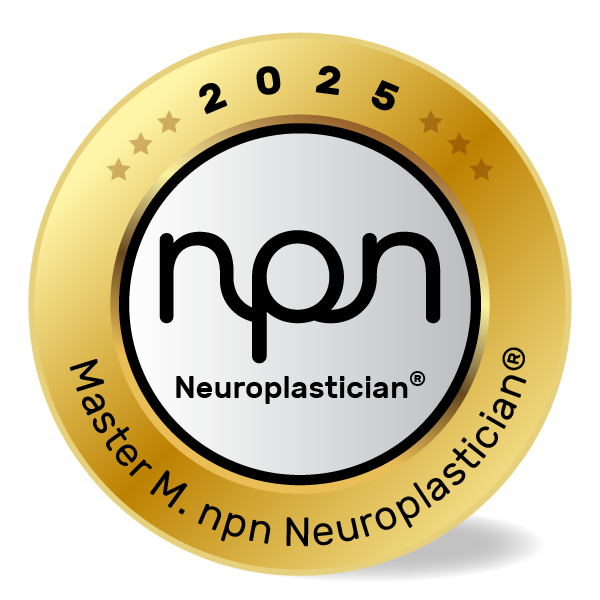Unlocking the Brain’s Healing Power: Exploring Neurographic Art and Traditional Therapy Through Neuroscience
npnHub Editorial Member: David Goodman curated this blog
Key Points
- Neurographic art and traditional therapy both support brain health but engage different neural mechanisms.
- Neurographic art stimulates creativity, emotional regulation, and neuroplasticity through embodied visual expression.
- Traditional therapy utilizes cognitive and emotional processing, relying heavily on verbal interaction and executive function.
- Combining neurographic art with traditional therapy can enhance therapeutic outcomes by addressing multiple brain systems.
- Neuroscience practitioners should tailor approaches to client needs, balancing creativity, cognition, and emotional support.
1. What is Neurographic Art vs. Traditional Therapy?
Imagine a neuroscience coach working with two clients struggling with anxiety. One client finds relief through talk therapy, exploring thoughts and feelings with a therapist. The other client draws intricate, flowing lines and shapes in a session of neurographic art – a visual, meditative process that helps them externalize emotions without words.
This contrast illustrates two paths toward healing. Neurographic art is a relatively new expressive technique developed by psychologist Pavel Piskarev, where freeform drawing connects neural pathways through creative, nonverbal expression (Source) . Traditional therapy includes evidence-based methods like cognitive-behavioral therapy (CBT), psychoanalysis, or humanistic counseling, focusing on verbal dialogue, insight, and behavior change.
Scientific research is now beginning to explore neurographic art’s impact on the brain. Early studies suggest it activates the default mode network, promoting creativity and emotional integration. Traditional therapy’s benefits are well-established, linked to changes in the prefrontal cortex and limbic system, aiding emotional regulation and cognitive restructuring (American Psychological Association).
In this blog, we’ll explore the neuroscience behind these approaches, how they differ, and how practitioners can decide which is best for their clients.
2. The Neuroscience of Neurographic Art and Traditional Therapy
Picture a neuroplasticity coach working with a client after trauma. The client struggles to articulate feelings verbally in therapy, but during neurographic art sessions, they feel a calming flow as they draw spirals and curves. The coach notices the client’s heart rate slows, and mood improves after the art session.
This example highlights how neurographic art may engage brain regions involved in sensorimotor integration, emotion, and creativity, such as the insula, anterior cingulate cortex, and the default mode network (DMN). By engaging visual and motor pathways simultaneously, neurographic art encourages the formation of new neural connections and emotional self-regulation (Source).
Traditional therapy, conversely, works primarily through cognitive pathways. Sessions activate the prefrontal cortex, crucial for executive function and cognitive control, allowing clients to reframe thoughts and behaviors. The limbic system, including the amygdala and hippocampus, is modulated to reduce fear and stress responses. Verbal processing stimulates language areas like Broca’s and Wernicke’s regions, aiding insight and emotional awareness.
Dr. Stephen Porges’ Polyvagal Theory supports both approaches, emphasizing the role of autonomic nervous system regulation – neurographic art promotes calming through embodied action, while traditional therapy targets cognitive-emotional integration (Source).
Thus, while both approaches promote neuroplasticity, they do so via distinct brain networks.
3. What Neuroscience Practitioners, Neuroplasticians, and Well-being Professionals Should Know
In a busy clinic, a neurocoach notices some clients thrive in verbal dialogue, quickly gaining insight through talk therapy. Others, especially those with trauma or language difficulties, resist verbal expression but relax and open up through drawing.
Practitioners should recognize that both neurographic art and traditional therapy serve different neural needs. Misconceptions exist that art therapy is “less scientific” or that talk therapy is always superior. In truth, neurographic art complements cognitive therapy by accessing emotional and sensorimotor circuits that verbal talk may miss.
Common practitioner FAQs include:
- Can neurographic art replace traditional therapy for trauma?
- How can I integrate neurographic art into my existing therapeutic framework?
- Is neurographic art effective for clients with neurodiverse conditions like ADHD or autism?
Research from Stanford and Harvard supports multimodal interventions that combine verbal and nonverbal strategies, especially for complex cases. Understanding client preferences and neurological profiles helps practitioners choose or blend these methods effectively.
4. How Neurographic Art and Traditional Therapy Affect Neuroplasticity
Both neurographic art and traditional therapy harness neuroplasticity but through different neural mechanisms.
Repeated practice of neurographic art strengthens connections between visual, motor, and emotional centers, encouraging a calming flow state that can remodel stress pathways. This engagement of the sensorimotor cortex and DMN supports new, flexible neural networks and emotional resilience (neuroplasticity studies in art therapy).
Traditional therapy’s repeated cognitive restructuring rewires prefrontal-limbic circuits, reducing maladaptive fear responses and improving executive control over emotions. This is supported by meta-analyses on CBT’s effect on brain function (NIH).
By targeting different brain systems, these approaches can be complementary, optimizing brain rewiring for recovery and growth.
5. Neuroscience-Backed Interventions to Optimize Neurographic Art and Traditional Therapy
Behavioral interventions matter because many clients face cognitive, emotional, or sensory barriers that one approach alone may not address. Integrating neurographic art with traditional therapy can meet diverse neural needs.
1. Combine Verbal Reflection with Neurographic Drawing
Concept: Verbal and nonverbal modalities engage complementary brain networks, enhancing insight and emotional integration (Harvard Art Therapy research).
Example: A coach guides a client to draw emotional states, then reflect verbally on feelings.
Intervention:
- Encourage clients to create neurographic drawings expressing current emotions.
- Follow with verbal discussion linking images to thoughts and feelings.
- Use drawings as tools for cognitive reframing.
2. Use Neurographic Art to Regulate Arousal
Concept: Drawing engages parasympathetic pathways reducing amygdala hyperactivity, fostering calm (Polyvagal Theory).
Example: A trauma therapist introduces neurographic art during high-stress moments.
Intervention:
- Incorporate brief art sessions to lower client anxiety.
- Combine with breathing exercises for enhanced regulation.
- Track mood changes pre- and post-art.
3. Traditional Therapy Focused on Cognitive Restructuring
Concept: Cognitive therapy strengthens prefrontal regulation over emotional centers, improving adaptive thinking (Source).
Example: A therapist helps a client reframe negative thoughts linked to anxiety.
Intervention:
- Use thought records to identify cognitive distortions.
- Practice reframing negative beliefs into positive, realistic ones.
- Reinforce with homework and real-life applications.
6. Key Takeaways
Choosing between neurographic art and traditional therapy depends on the client’s brain wiring, preferences, and therapeutic goals. Both approaches stimulate neuroplasticity through different brain pathways – visual-motor-emotional for neurographic art, cognitive-emotional for traditional therapy. Neuroscience practitioners benefit by integrating these methods, personalizing interventions for deeper healing and growth.
🔹 Neurographic art promotes creativity, emotional regulation, and sensorimotor engagement.
🔹 Traditional therapy targets cognitive restructuring and emotional insight.
🔹 Combining both optimizes neuroplasticity and therapeutic outcomes.
🔹 Practitioners should assess client needs and flexibility to tailor approaches.
The best therapy is one that respects the brain’s diversity and harnesses multiple paths for healing.
7. References
- Piskarev, P. (2014). Neurographic Art: A Technique for Creative Expression and Neural Integration. https://contagionmedia.net/blog/visual-arts/neurographic-art?srsltid=AfmBOopejJMZrhiJUayYPlOVOt8OJwZaGMEq6jChjrmM_-7CRGb6RU5l
- American Psychological Association. (2017). Art Therapy and Neuroscience. https://psycnet.apa.org/record/2022-20222-000
- Porges, S. (2011). The Polyvagal Theory: Neurophysiological Foundations of Emotions. Norton. https://psycnet.apa.org/record/2011-04659-000















